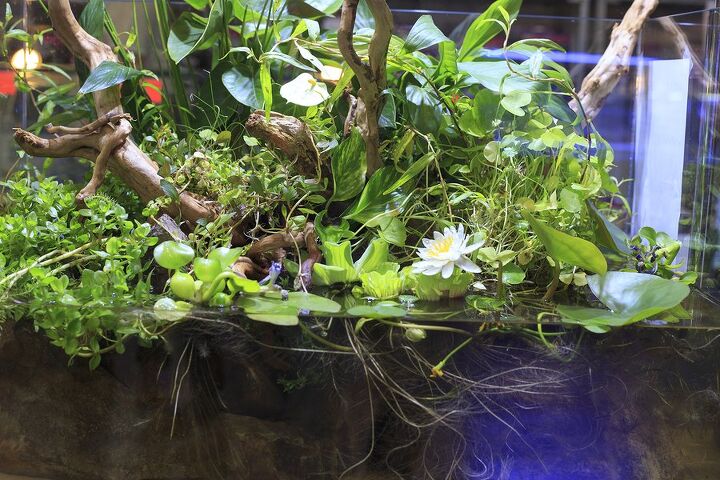Tips for Converting From a Fish-Only to a Planted Tank

If you are new to the aquarium hobby, you would be wise to start out with a fish-only tank. Catering the conditions in your tank to suit the needs of your fish is challenging enough without adding the extra challenge of live plants. Once you get your fish-only tank up and running, however, you can use the tips below to convert it to a planted tank.
Pros and Cons of Planted Tanks
Before you make the move to a planted tank, you should think about whether it is really the right option for you or not. Planted tanks are great because they are full of color and life, but they can also be a challenge to set up and maintain. A list of pros associated with planted tanks include:
- Live plants look much better than artificial plants – they add color to the tank.
- Aquarium plants will help to filter toxins like ammonia and nitrate out of your tank water.
- Live plants convert carbon dioxide into oxygen for your fish to breathe.
- Aquarium plants can give your tank a natural look.
Related: Tips and Tricks for Stocking a Community Tank
These are just a few of the many benefits associated with planted tanks. As wonderful as planted tanks are, there are still some downsides. A few of the cons associated with planted tanks include:
- Live plants require high levels of lighting in order to grow and thrive (in most cases).
- Aquarium plants require special substrate and nutrient supplementation to thrive.
- Live plants typically do not do well in low tank temperatures or brackish water.
- Aquarium plants sometimes require different water conditions than fish.
Tips for Converting to a Planted Tank
If after reviewing the pros and cons listed above you decide that a planted tank is indeed the right choice for you, you can think about making the switch. The first thing you need to do is research different types of aquarium plants that will work well with the conditions in your tank. Hopefully you did your research before stocking your aquarium to make sure that the fish you chose all had similar tank requirements. If so, then all you have to do now is find live plants that can thriving within those same conditions. Many live plants are adaptable to different temperature ranges and water conditions, so this shouldn’t be too difficult.
Related: Top 5 Fast-Growing Aquarium Plants for Planted Tanks
Once you’ve chosen your plants you then need to make sure that your lighting system is up to par for a planted tank. In order to thrive and grow, live plants require 10 to 12 hours of full-spectrum lighting each day. You should make sure that your lighting system provides at least 2 to 4 watts per gallon of full-spectrum lighting. If it doesn’t, you’ll need to make an upgrade. You should also consider attaching your lights to an automatic timer to make sure your plants get enough light without getting too much. Too much light could cause your plants to grow spindly and it might also encourage algae growth.
In addition to making sure your tank provides enough lighting for aquarium plants, you also need to make sure the right nutrients are available. This might require you to replace your gravel or sand substrate with a planting medium. Another option is to add potted plants to your tank or simply fertilize the roots with a root tab. You should keep in mind that the waste your fish produce and any uneaten fish food will also add to the nutrient content of your water, so be wary of over-fertilizing.
Aside from ensuring adequate lighting and nutrition, there is little else you have to do to make the transition from a fish-only to a planted tank. When you are ready to actually add your plants, be mindful about the arrangement you choose. It is best to keep shorter plants toward the front of the tank and place larger plants around the back and sides.

Kate Barrington is the loving owner of two cats (Bagel and Munchkin) and a noisy herd of guinea pigs. Having grown up with golden retrievers, Kate has a great deal of experience with dogs but labels herself a lover of all pets. Having received a Bachelor's degree in English, Kate has combined her love for pets and her passion for writing to create her own freelance writing business, specializing in the pet niche.
More by Kate Barrington























